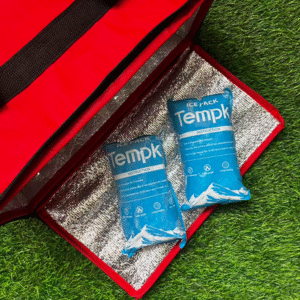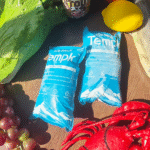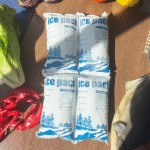Bagaimana Kantong Es Kering & Paket Merevolusi Pengiriman Rantai Dingin di 2025?
Di dalam 2025, barang-barang yang sensitif terhadap suhu menghadapi tantangan transportasi yang semakin kompleks. To ensure that perishable items like pharmaceuticals, makanan, and biological samples reach their destination safely and without compromise, dry ice bags and dry ice packs are pivotal. These cold chain solutions provide a reliable, hemat biaya, and environmentally-friendly method for maintaining ultra-low temperatures. This article explains the working principles of dry ice bags, their advantages over traditional cooling methods, and how businesses can maximize savings and operational efficiency.
-
Bagaimana melakukannya dry ice bags and packs function in cold chain logistics?
-
What benefits do dry ice packs offer over traditional ice and gel solutions?
-
How can businesses optimize their shipping costs using dry ice technology?
-
What are the emerging trends and innovations in dry ice technology for cold chain logistics?
How Do Dry Ice Bags and Packs Function in Cold Chain Logistics?
Dry ice bags and packs play a crucial role in maintaining the integrity of temperature-sensitive products during transit. Filled with solid carbon dioxide, dry ice sublimates at -78.5°C (-109.3° f) untuk mempertahankan suhu ultra-rendah. Unlike water-based coolants, es kering disublimasi menjadi gas, tidak meninggalkan residu cairan. This unique property helps avoid issues like water damage to products, making it an ideal solution for industries that require precise and clean temperature control, such as pharmaceuticals and biotechnology.
Key Characteristics of Dry Ice Bags and Packs:
-
Sub-zero cooling: Es kering mempertahankan suhu yang sangat rendah, ideal for frozen food, Farmasi, dan bahan penelitian.
-
Tahan lama: Dry ice packs stay cold for extended periods, even during long-distance shipments.
-
Tidak ada air yang mencair: The sublimation of dry ice into CO₂ gas avoids water damage, which can be a problem with traditional ice and gel packs.
| Keuntungan | Es Tradisional | Kantong es kering & Paket | Your Impact |
|---|---|---|---|
| Durasi pendinginan | Short-lived | Tahan lama | Umur simpan produk diperpanjang |
| Risiko Kerusakan Air | Tinggi | Tidak ada | Mengurangi pembusukan |
| Storage Efficiency | Tebal, lebih berat | Kompak, lebih ringan | More cost-efficient shipping |
Why Should Businesses Choose Dry Ice Packs Over Traditional Methods?
Dry ice offers several advantages over traditional cooling methods such as gel packs and regular ice. Here’s a breakdown of how dry ice packs outperform conventional ice:
-
Durasi pendinginan yang lebih lama: Paket es kering dapat mempertahankan suhu dingin hingga 48 jam, compared to regular ice that begins to melt within a few hours.
-
Efisiensi Ruang dan Berat: Since dry ice is denser than water, it occupies less space and reduces the overall weight of the shipment, which can lead to substantial cost savings in transport.
-
Ramah Lingkungan: Es kering sublimat ke dalam gas co₂, which does not contribute to water contamination or waste disposal issues, unlike gel or water-based packs.
Contoh:
A pharmaceutical company that switched from traditional ice packs to dry ice reported a 30% pengurangan tingkat pembusukan, dan a 15% savings in shipping costs due to reduced packaging volume and fewer restocks during transport.
How Can Businesses Save Money with Dry Ice Packs?
Switching to dry ice packs can lead to significant cost savings in various ways:
-
Longer Cooling Periods: Dry ice packs reduce the need for constant replenishing during transport, lowering the overall cost of cooling materials.
-
Smaller Packaging Size: Their compact design allows businesses to optimize storage and shipping containers, reducing space and weight, which translates into lower shipping expenses.
-
Potential for Reuse: Dalam beberapa kasus, dry ice bags can be reused, especially the outer packaging materials, helping reduce waste and save money on additional supplies.
Studi kasus:
A global seafood distributor transitioned to dry ice for long-haul shipments, menghasilkan a 20% pengurangan tingkat pembusukan, improved product quality, and a decrease in transport-related costs by 18% in just one quarter.
What Are the Latest Innovations in Dry Ice Technology for Cold Chain Logistics?
Karena logistik rantai dingin terus berkembang, the demand for smarter, more efficient cooling solutions has increased. Di dalam 2025, dry ice technology has incorporated several innovative features that improve performance and offer new opportunities for monitoring and compliance:
-
Kantong Es Kering Cerdas: Equipped with temperature sensors, these bags communicate with tracking systems, offering real-time temperature monitoring for sensitive shipments.
-
Bahan isolasi lanjutan: New materials have enhanced the ability of dry ice bags and packs to maintain low temperatures over extended periods.
-
Bahan Pengemasan Berkelanjutan: There is a growing trend toward biodegradable dry ice packaging, helping companies meet environmental goals and reduce their carbon footprint.
Perkembangan terbaru sekilas:
-
Integrasi Teknologi Cerdas: Real-time monitoring and tracking of temperature-sensitive shipments ensure quality and compliance.
-
Eco-Friendly Innovations: The adoption of biodegradable and recyclable materials for packaging reduces the environmental impact.
-
Enhanced Cooling Materials: New insulation technologies extend the effective cooling period, bahkan dalam kondisi yang menantang.
Frequently Asked Questions About Dry Ice Bags and Packs
Q1: How long do dry ice bags last in transit?
Khas, es kering bertahan antara 12 ke 48 jam, tergantung pada jumlah yang digunakan dan kualitas isolasi. Untuk pengiriman yang lebih lama, es kering tambahan mungkin diperlukan.
Q2: Dapatkah kantong es kering digunakan kembali?
Ya, the packaging material used for dry ice bags can often be reused, provided it remains intact and undamaged.
Best Practices for Using Dry Ice Bags and Packs
To maximize the effectiveness of dry ice bags and packs, Ikuti praktik terbaik ini:
-
Correct Layering: Place the dry ice packs in the shipping container to ensure they are properly distributed between the products.
-
Ventilasi: Always use a container with ventilation holes to allow CO₂ gas to escape, mencegah penumpukan tekanan.
-
Pemantauan suhu: Use temperature loggers or IoT-enabled devices to track the temperature during transit and ensure your shipment stays within safe temperature ranges.
Tips Praktis:
-
Untuk pengiriman farmasi, combine dry ice with phase-change materials (PCMS) for better temperature stability.
-
For food deliveries, ensure that dry ice is properly insulated and positioned to prevent direct contact with moisture-sensitive items.
Kesimpulan
Dry ice bags and dry ice packs continue to transform cold chain logistics, providing businesses with an efficient and sustainable solution for temperature-sensitive shipments. By understanding how to effectively use these innovative products, businesses can enhance their operations, mengurangi biaya, and improve product quality and customer satisfaction.
Langkah selanjutnya:
Consider transitioning to dry ice for your next shipment to enjoy longer-lasting cooling, better storage efficiency, and cost savings. Contact Tempk today for expert advice on optimizing your cold chain logistics with dry ice solutions.
Tentang tempk
Dan Tempk, kami berspesialisasi dalam solusi rantai dingin, offering a range of high-performance dry ice bags and packs designed to enhance the safety and efficiency of temperature-sensitive shipments. Our products meet the highest standards of performance and sustainability, ensuring that your products stay safe and fresh during transit.
Panggilan untuk bertindak: Reach out to Tempk for a consultation on how our dry ice solutions can improve your cold chain logistics.
























